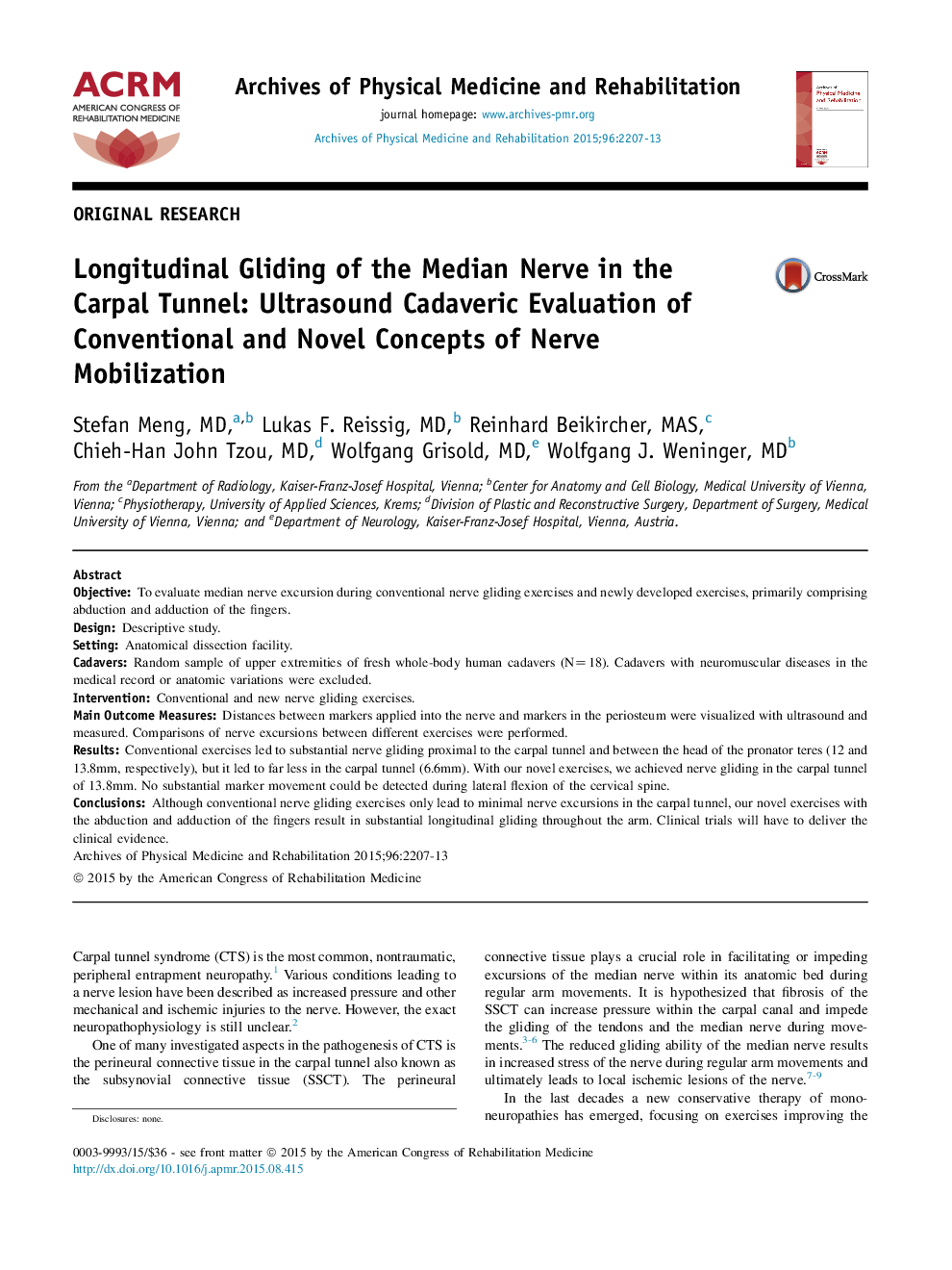| Article ID | Journal | Published Year | Pages | File Type |
|---|---|---|---|---|
| 3448205 | Archives of Physical Medicine and Rehabilitation | 2015 | 7 Pages |
ObjectiveTo evaluate median nerve excursion during conventional nerve gliding exercises and newly developed exercises, primarily comprising abduction and adduction of the fingers.DesignDescriptive study.SettingAnatomical dissection facility.CadaversRandom sample of upper extremities of fresh whole-body human cadavers (N=18). Cadavers with neuromuscular diseases in the medical record or anatomic variations were excluded.InterventionConventional and new nerve gliding exercises.Main Outcome MeasuresDistances between markers applied into the nerve and markers in the periosteum were visualized with ultrasound and measured. Comparisons of nerve excursions between different exercises were performed.ResultsConventional exercises led to substantial nerve gliding proximal to the carpal tunnel and between the head of the pronator teres (12 and 13.8mm, respectively), but it led to far less in the carpal tunnel (6.6mm). With our novel exercises, we achieved nerve gliding in the carpal tunnel of 13.8mm. No substantial marker movement could be detected during lateral flexion of the cervical spine.ConclusionsAlthough conventional nerve gliding exercises only lead to minimal nerve excursions in the carpal tunnel, our novel exercises with the abduction and adduction of the fingers result in substantial longitudinal gliding throughout the arm. Clinical trials will have to deliver the clinical evidence.
